At the third edition of the ‘Badlands 2022’, one of the toughest self-supported ultra-endurance races in the world, this year's challenge was to complete a whopping 785 kilometres with almost 15,000 metres of elevation gain across the south of Spain. In addition to the many metres in altitude, the crossing of the only desert in Europe was a particular challenge. Ultra cyclist Marion Dziwnik, who already started in 2021 and was the first woman to finish after 79 hours, wanted to take on the challenge again this year. We spoke to Marion about the hardships and challenges of this ultra-endurance race.
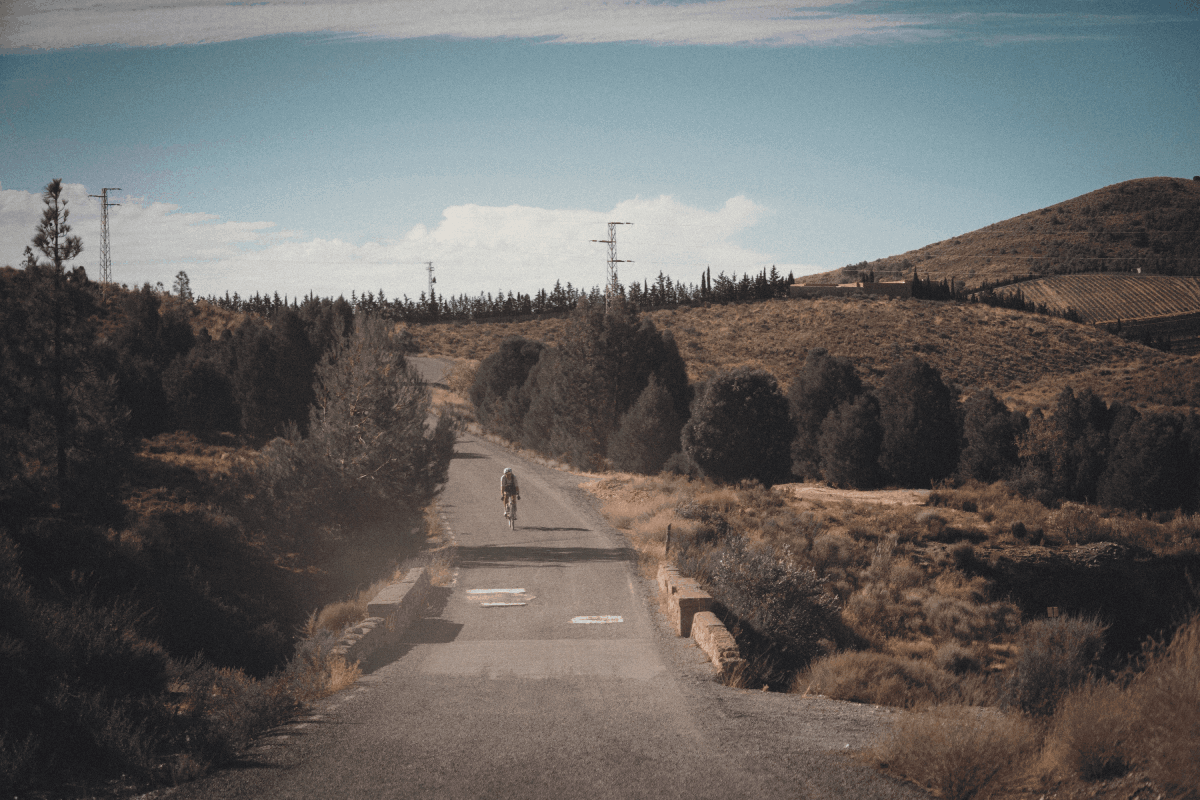
DWW: Marion, you came 27th this year. A really strong performance. In short: how was it?
Marion Dziwnik: I arrived at 3.30am after 67 hours 41 minutes - about 12 hours faster than last year, absolutely fantastic. It went so much better. I ‘only’ came fifth among the women, but there was really tough competition this year.
Why did it go better?
The first day started really well, I was in a good mood and the weather was much better than last year. This time it was a maximum of 25 degrees, last year we had around 40 in places. On average I was about 2 km/h faster and basically rode super efficiently, only taking short breaks and working my way up the field bit by bit. Most of the time I rode close to Luisa (Luisa Werner) and Christiana (Christiana Tamburini), Lael (Lael Wilcox, professional ultra-distance rider, editor's note) and Cyntia (Cyntia Frazier, editor's note) were steaming away at a faster pace.
How far did you get on the first day?
On the first day I made it as far as Gor, kilometre 265, which is the last stop before the Sierra de los Vilabres, desert with no civilisation and nowhere to fill up with water. That's why I decided to take a short nap beforehand, so that I'm fresh and motivated going into this section and my overnight journey isn't so long. It's not a good idea to sleep in the Sierra - it's 1000 metres uphill to start with and at 2000 metres it's incredibly cold at night. The plan was to sleep for two hours, but after just one hour I was awake again and felt fit enough to continue. It was funny that I rode the routes that I only saw in the dark last year in the light this time and vice versa. That was cool because I knew that it wouldn't be too tough a night in terms of riding.
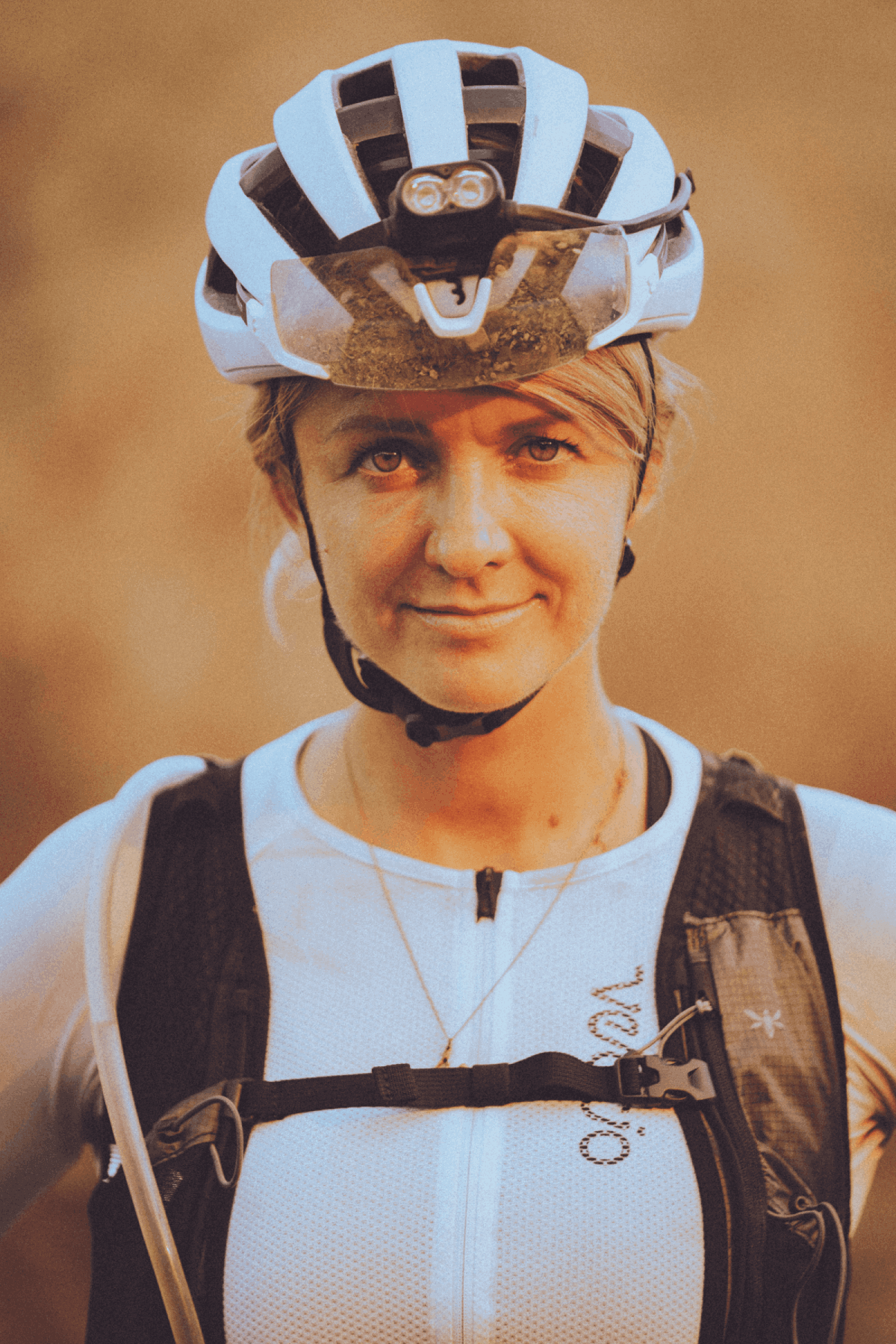
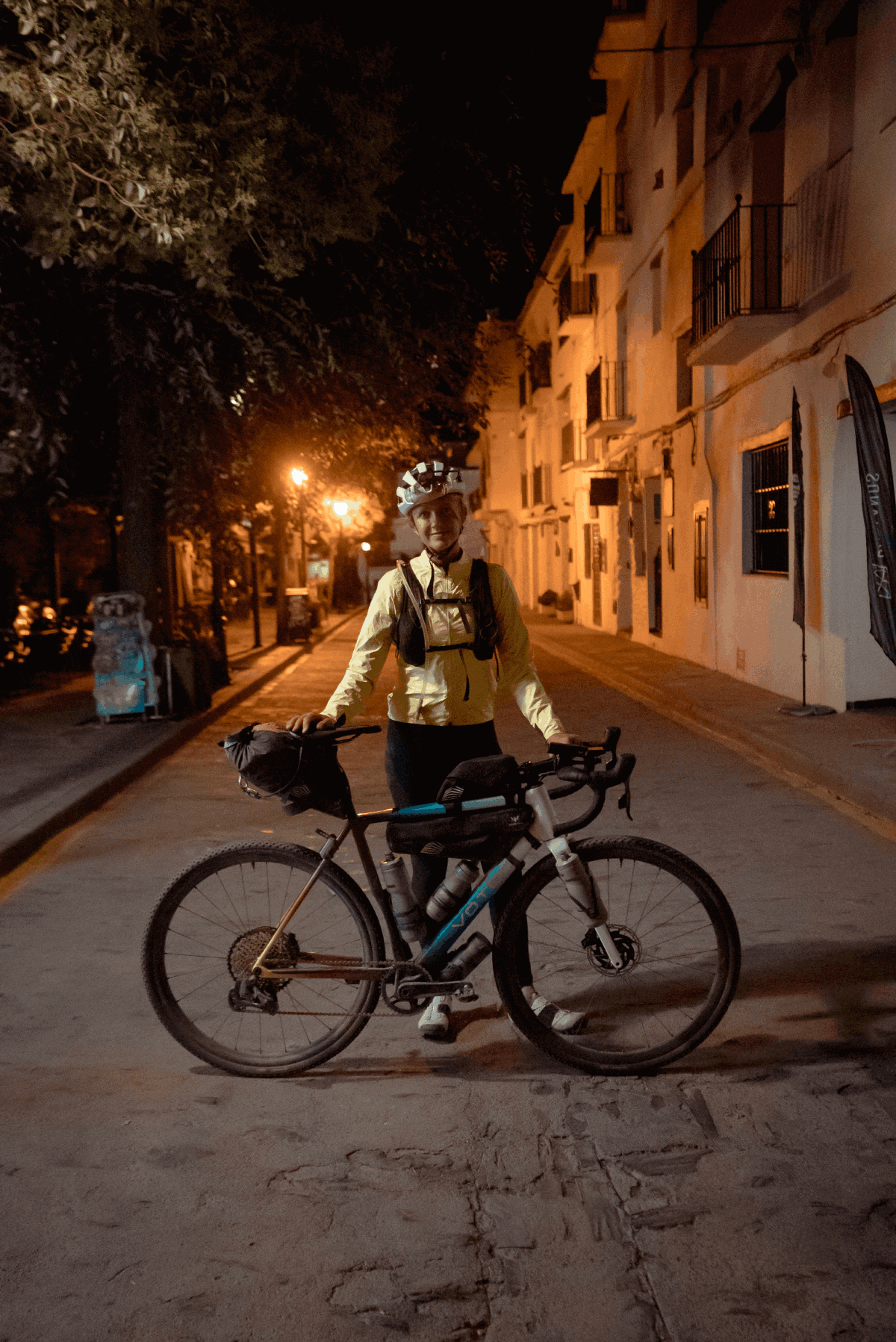
Why were you back on the start line again after your victory in 2021?
I made a few mistakes last year and thought to myself: ‘I can definitely do better.’ Because it was the first time I'd ridden a race where I had to ride overnight and sleep outside, I had to learn a lot of things during the race. On the last day, for example, I was super inefficient because I had the finish in mind and wanted to push through the last 50 kilometres without sleeping. But it was all uphill, the terrain is very rough, you're incredibly slow and you need at least five hours or even longer for the last 50 kilometres. The race was overly tough, also because I made so many mistakes. That's why I just wanted to ride the race again more consciously, in the sense that I knew what I was getting myself into. I also wanted to be faster than last year, but not by riding harder and pushing harder, but because I've become more efficient and make fewer mistakes.
What would you have liked to optimise this year?
Before the start last year, I thought that I would definitely sleep well in nature far away from civilisation, where I would have peace and quiet and soft ground. In the end, that wasn't the case at all. I realised that sleeping wouldn't work, packed up my sleeping camp and continued on until I came to a few lonely houses. I slept on tarmac, which was good because the ground was flat and there was a bit of light to unpack and repack my stuff.
‘I burn 8,000 - 9,000 calories a day on a race like this. You can't get that much down with solid food at 40 degrees. That would be nine pizzas!’
What else did you want to improve beyond sleep?
My food. I ate far too little last year because I couldn't get anything down due to the heat. The only things that worked were gels and carbohydrate drinks, which I packed more of this year. I burn 8000 - 9000 calories a day on a race like this. You can't get that much down with solid food at 40 degrees. That would be a whole nine pizzas (laughs) I have to take a lot of my food with me because the first two thirds of the route are particularly interesting from a tactical point of view because there aren't that many refreshment points. There are several key points where you need to stock up. After Gor there is nothing for 120 kilometres.
But does that also mean that you have to carry huge amounts of water?
I have five litres with me, but there are always water sources. There are no springs in the 120 kilometres after Gor either, but at least it's over 1000 metres above sea level and not so hot.
Have you taken a different approach to planning because you've won the race before, or do you simply want to optimise your own performance?
The latter. I didn't know what the competition would be like and there were a few strong women at the start again. Each of them has already won something this year. Lael Wilcox was there, she's the luminary of ultra cycling for women. But I just wanted to measure myself against my own performance and see how far I could get. When I see what kind of performance I put in last year, I still think: ‘That was amazing!’ I can't really cope with three hours of sleep a day in everyday life and I can't do 5,000 metres of altitude in three days in a row either. I'm still very much in awe of my own performance. I discovered my superpowers a bit during the race last year, especially the adrenaline that fuelled me when I knew I was in the lead.
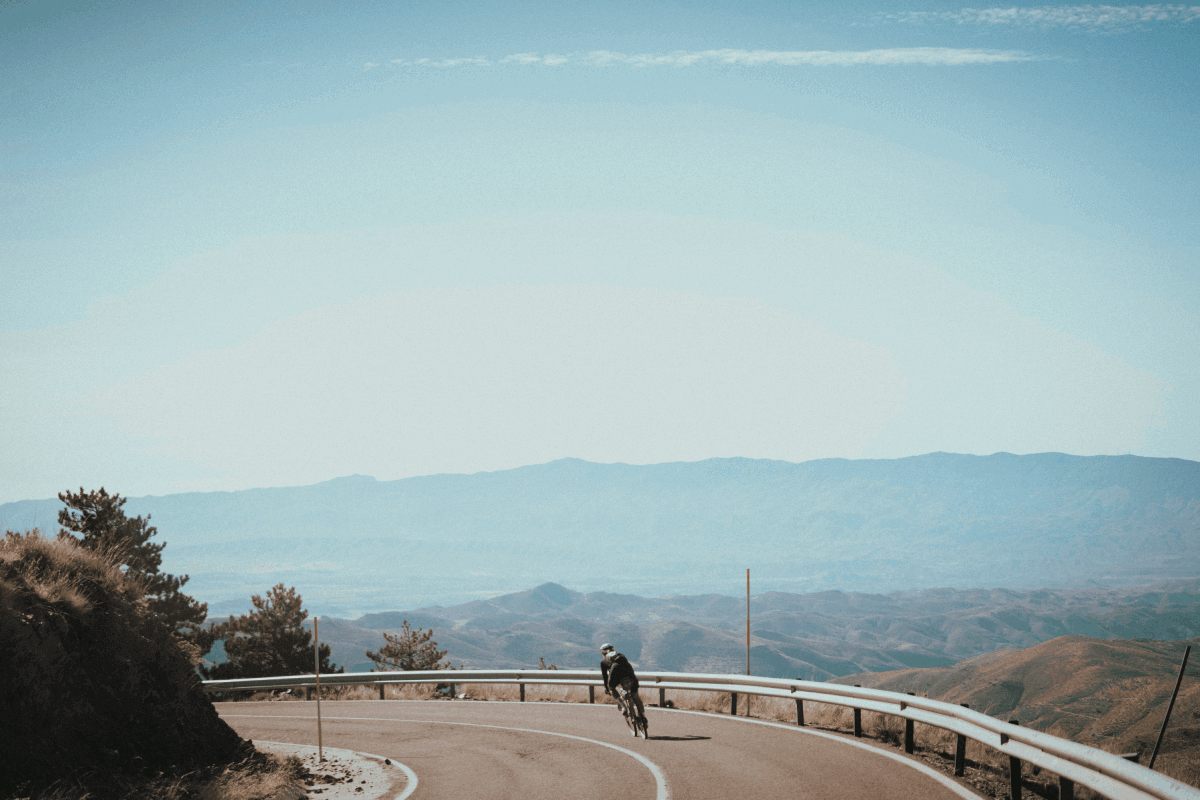
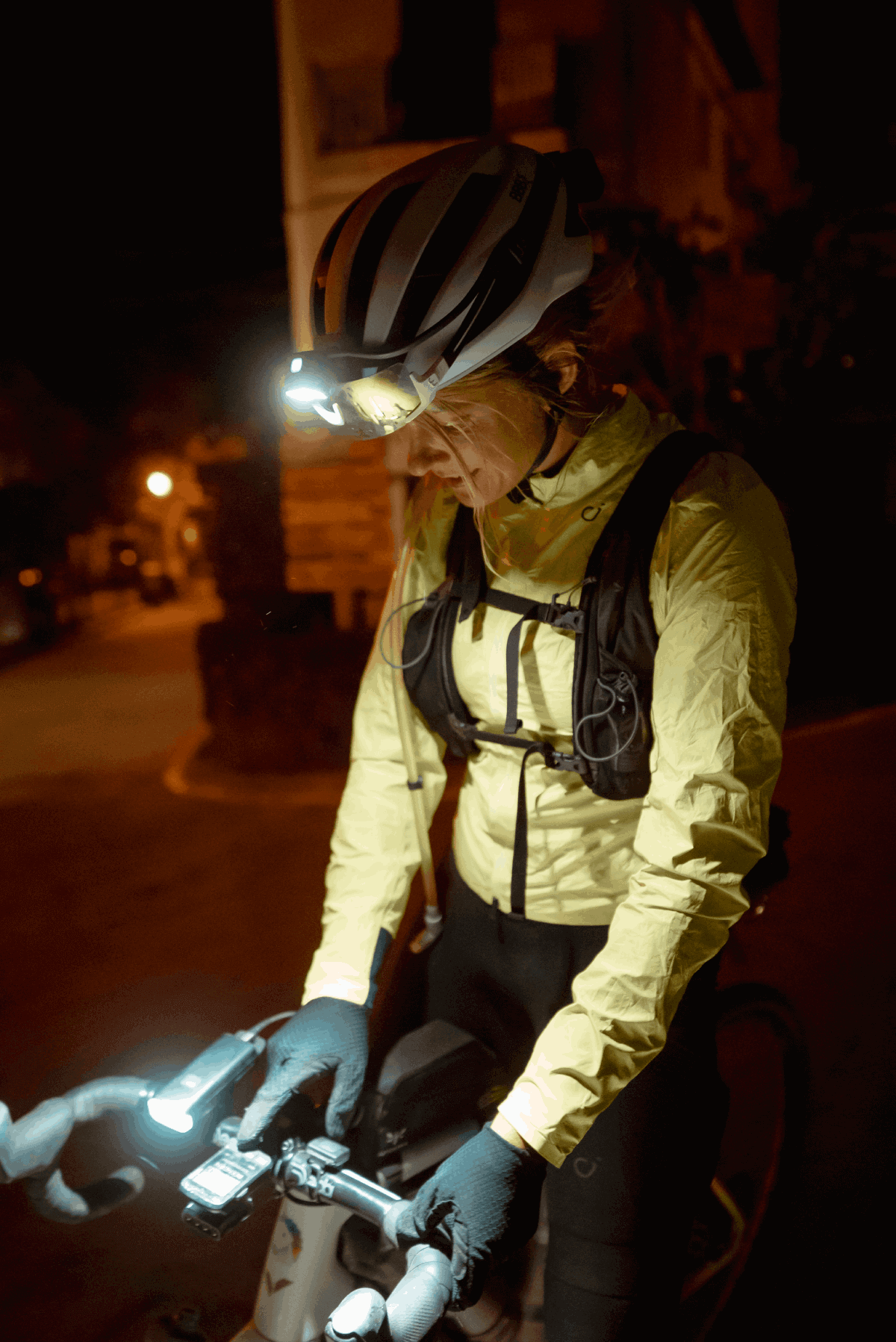

All the women who were tipped to win had already won races this year. You won the Orbit360 series for the second time a few weeks ago. How does this series fit in with a multi-day race?
The big difference is that you only ride one-day stages in the Orbit360. But you really learn to ride efficiently. The routes are so long that it's important to optimise your breaks. I often ended up in the top 5, even though I didn't ride super hard. However, I only had a break time of less than five minutes on some orbits and that's what counts in ultra-distance races. In gravel races, you also have to deal mentally with the fact that you're not making progress. You don't just have the kilometres and the metres in altitude. Sometimes you're also very slow or hiking uphill somewhere. You still have to stay positive.
Did you plan the orbits as meticulously as the Badlands?
I did that the last two years. I looked at the map and the elevation profile beforehand and memorised where to eat and drink. I didn't do that this year because things always turn out differently than you think anyway. I've also developed a superpower for finding water, at least in Germany. Cemeteries, houses, barns - it's ultra-fast. You drive there, fill up your bottle and you're on your way. That worked well this year.
‘Physiologically, it's no good sitting on the bike for more than five hours, intervals are better’
Did you focus your training specifically on certain loads?
Last year I had a proper plan in which I built in the orbits. I did a block of three FTP builds during the week and an orbit at the weekend. I did that for three weeks and then took a week off, which worked really well. It didn't work this year because I was travelling a lot for work and therefore couldn't train as systematically. I went jogging more often and planned the orbits so that I could do them where I was travelling on business. That worked out better than I thought, my FTP even improved a little. I also recovered incredibly well because I simply have a good life at the moment. Although I've trained less this year, I'm fitter - that's cool!
You've only focussed on FTP in your training because you don't have to sprint on such long tours anyway?
Exactly. In principle, you don't have to ride long tours either, I only do that for my head and for mental training when I hit my lows on long tours. Physiologically, there's no point in sitting on the bike for longer than five hours, intervals are more beneficial.
So the physical and mental preparation went well, what about the bike?
The bike has become much lighter, it's now a carbon prototype of the new Votec VRX with carbon components. The gearing has remained the same, the transmission is a mullet build with 40 teeth at the front and a 10-52 MTB cassette at the rear. That's worth a lot for the many metres of altitude you have to cover. I think the new bike rides faster, either because I sit differently or because it's lighter.
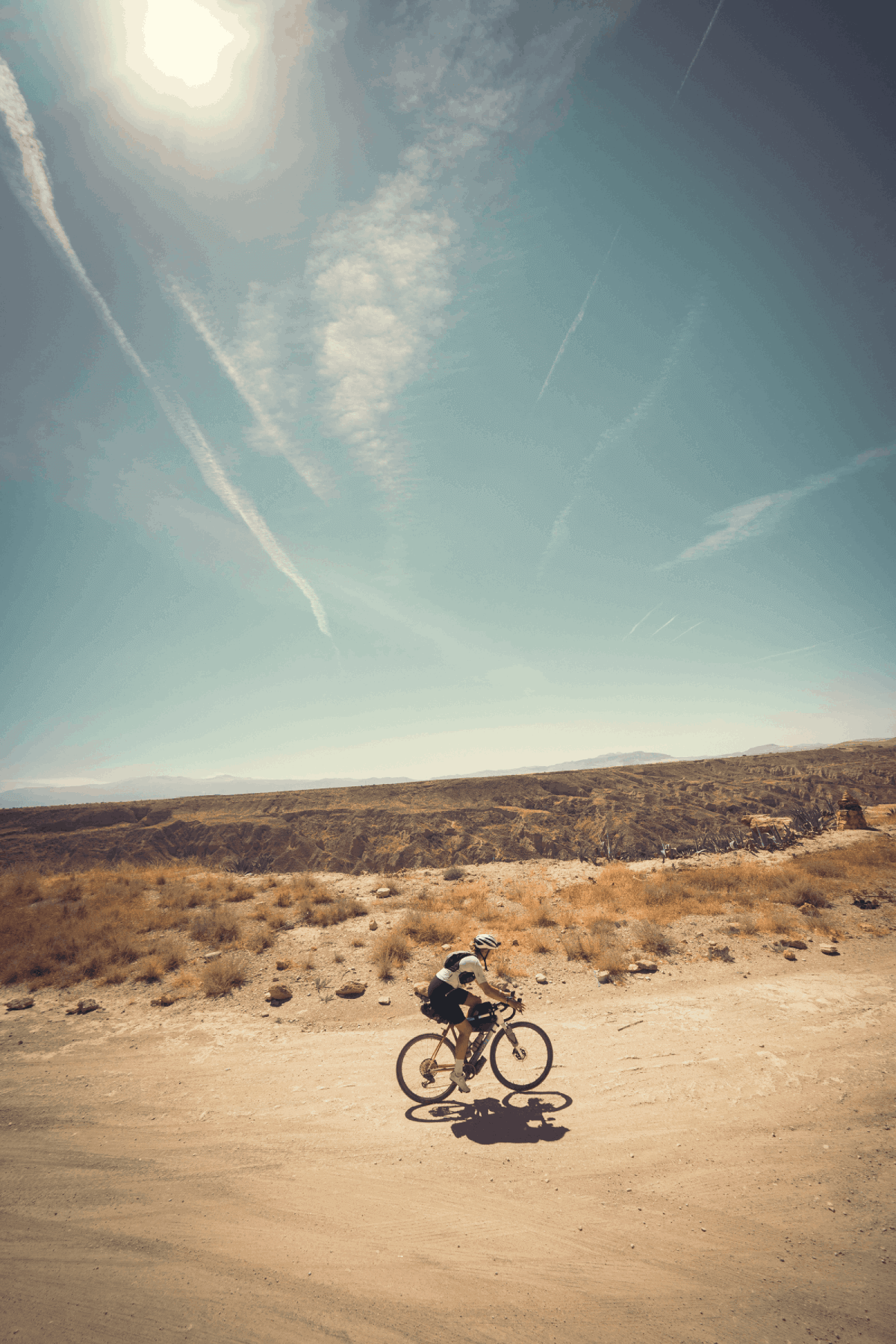

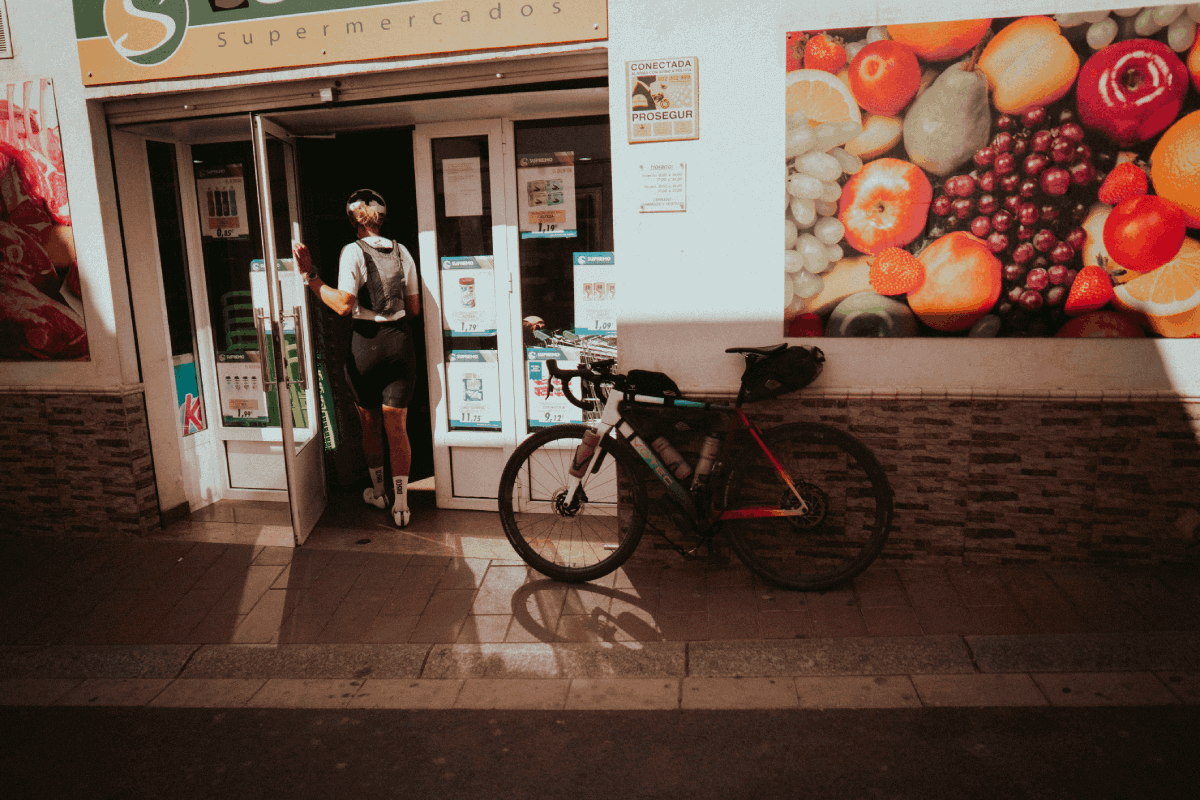
What tyres were you riding on? Some riders would probably only ride this with MTB tyres…
I ride Continental Terra Trail in 40 millimetres, which is a super tyre. Mountain bike tyres are not my style, I once tested the Continental Terra Hardpack in 50 millimetres. I don't feel comfortable with such fat tyres, I feel like I'm on a tractor. And the race also has a lot of vertical metres, which is why it's important to be light on the road. If it gets too rough, I push anyway, I can't ride in deep sand even with 50 millimetre tyres, so I'm fine with 40 millimetres.
What is particularly important to you when it comes to your equipment?
My bag set-up has become lighter, last year I still had a thick bivouac sack and a down jacket with me. I took them out and my luggage has become a kilo lighter as a result. I now sleep in an emergency bivouac with a silk sleeping bag on a sleeping mat. That's why I was able to use the bags from the Apidura Racing Series. I wear Cargobibs from Velocio, which is mega cool. On the last long tour before the race, I bought a piece of strudel in a bakery and stuffed it in there. That gave me thighs like Robert Förstemann, but the strudel survived well and I was able to eat it 50 kilometres later. My mobile phone is always in my bag, so I can easily take photos while I'm riding - no other bag can do that as well. Especially when you're travelling on gravel and don't have much time for a photo because you want to have both hands on the handlebars again quickly. I also carried a hydration waistcoat from Apidura. I wear everything I have from Apidura anyway, because the brand invited me and gave me the starting place as a gift. My tools are under the bottom bracket, but I have two bottles in the frame and two on the fork.
Many ultra riders describe fatigue as one of their biggest opponents in such races. How did you cope with that?
In terms of tiredness, it was okay - I had slept really well the weeks before and I think I had built up a kind of ‘sleep buffer’ - but my body didn't feel like it had recovered properly in that one hour. Everything hurt and I really felt it on the second day. And as I knew that the third stage was going to be really tough again, I had to go into it as fit as possible. However, I really slumped on the last day, the fatigue caught up with me so badly that I had to struggle with microsleep. I just wanted to get through. My goal was always to beat my time from last year and I knew that I would easily manage that. Immediately after crossing the finish line, I was still pretty depressed because I was struggling with microsleep until the end and that was hell. In the four hours up to the finish I just thought that I'd never do it again and that it was the crappiest idea of my life to ride Badlands again, that's how intense it was for me. That dampened my joy about this good time for the time being.
How do you feel about this time in retrospect?
It comes little by little and it's possible that my mood will change again in the next few days. At the moment, however, I think that this sleep-deprived riding is too extreme and that it might even be my last race where I have to ride overnight because it wore me out so much. If you want to ride at the front, you have to bring everything with you! The standard has also risen enormously in the women's race. You have to ride efficiently, ride consistently, ride fast and then you can't sleep either - that's just part of it at the moment. If that's the screw I have to turn, then I'm out. That's how I see it right now.
Photos: Sebastian Samek/Votec